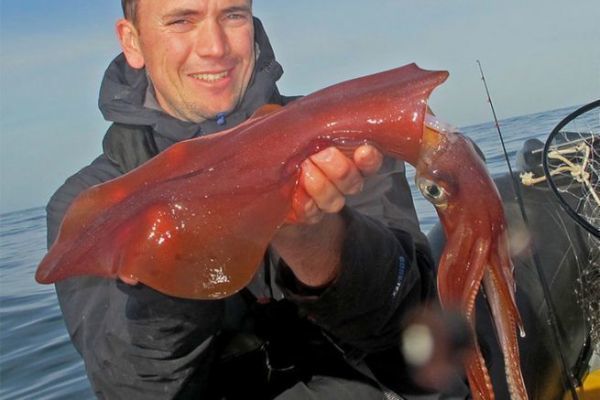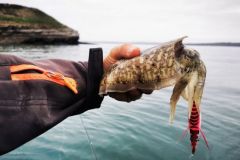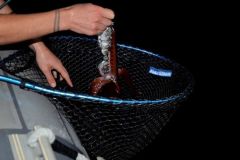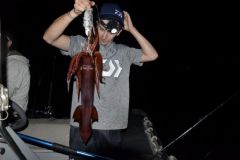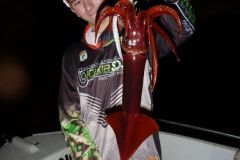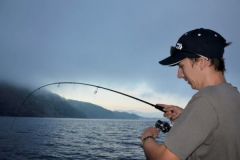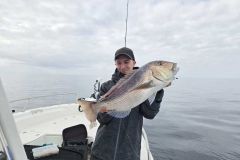Scientific name
Squid : Loligo vulgaris (Lamarck, 1798)
Red squid : Illex coindetii (Verany, 1839)
Morphology
Squid have a tube-shaped body covered with white skin flecked with red, brown or purple, depending on their state of stress, mimicry, defense or attack.
These cephalopods, also known as squid, have an internal shell under the skin of the back and a triangular fin at the rear. Squid have a detached head with two large eyes and ten tentacles with suction cups. Behind these tentacles hides a beak that shreds prey.
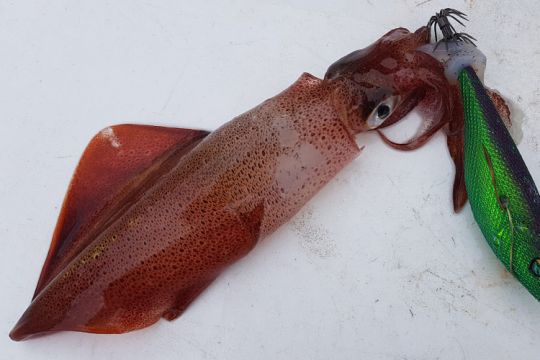
Fishing spots
Squid can be found close to the seabed, both inshore and offshore as winter approaches. From the shore, they can be found on the docks in port areas, often under the lights, at night. They can be found in the North Sea, English Channel, Atlantic and Mediterranean.
Squid fishing techniques
Particularly active from autumn onwards, especially at night in winter, squid are fished mainly with light jigs, a Japanese-inspired technique known as egging. This technique is becoming increasingly popular in France.
When a squid pulls on the lure, flick it briefly with your wrist, without forcing it, as its skin is fragile. They are particularly active from autumn onwards, especially at night in winter.
Reproduction
Squid reach adult size from 16 cm in length, at 3 years of age. Reproduction takes place in spring or summer, when they return to coastal waters.
Size and weight
- Size at sexual maturity: 16 cm
- Average size: 30 cm
- Maximum size: 60 cm
Good to know
Squids propel water to move forwards or backwards. They are particularly active from autumn onwards, especially at night in winter.

 /
/ 